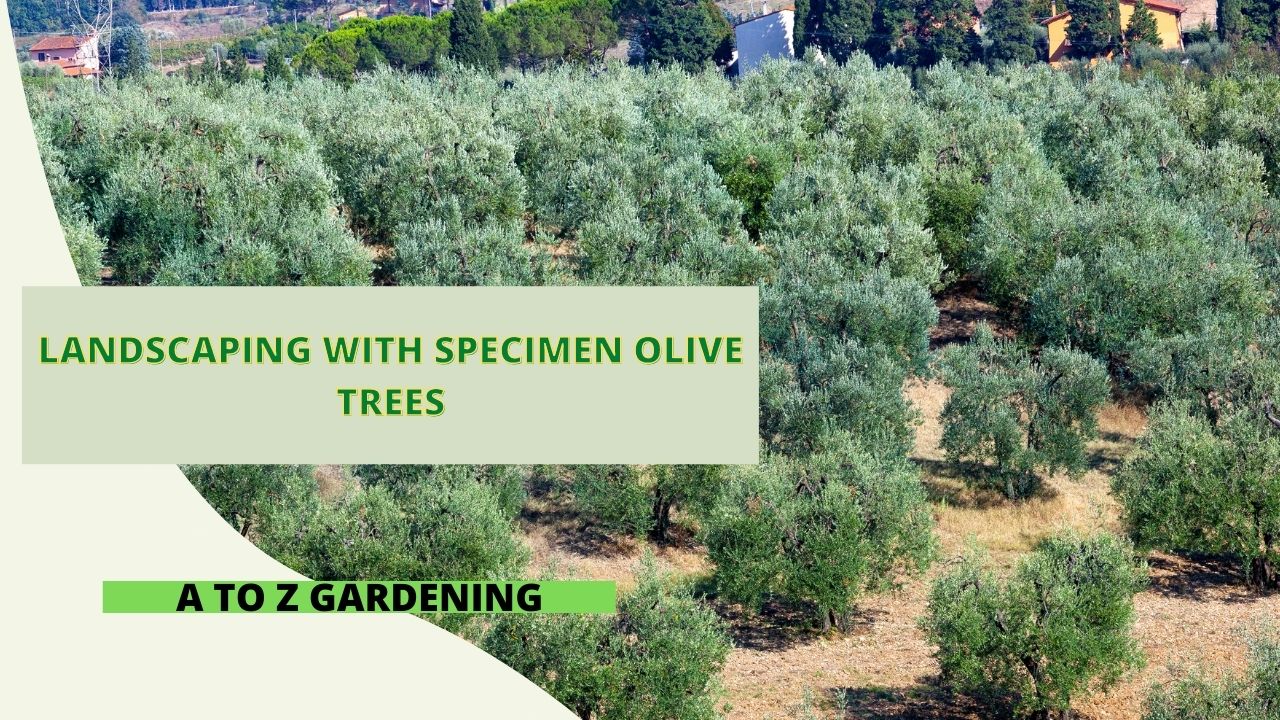Landscaping with Specimen Olive Trees: Ancient Beauty Meets Modern Elegance

Imagine stepping into a garden and finding yourself face to face with living history. Silvery leaves dance in the wind. A sculpted trunk tells stories through twisted grain and weathered bark. This is the presence of a specimen olive tree—timeless, noble, and surprisingly versatile in today’s landscape design.
Whether perched beside a Mediterranean-style patio or anchoring a minimalist zen garden, specimen olive trees have become icons of architectural beauty and ecological charm. In this post, we’ll explore what makes them remarkable, how to design around them, and why they belong in more than just European villas.
🌳 What Is a Specimen Olive Tree?
Let’s break it down: a specimen tree is a stand-alone, visually striking tree selected for its uniqueness. In the case of olive trees (Olea europaea), a specimen typically boasts:
- Mature age and character (often decades or centuries old)
- Architectural trunk form, including multi-stem or gnarled structure
- Evergreen, silvery foliage that plays with light and shadow
- Drought tolerance and resilience in varied climates
These trees don’t whisper—they speak. Loudly. And beautifully.
🏡 Landscape Styles That Pair with Olive Trees
The olive tree’s aesthetic appeal allows it to bridge design genres. From traditional to contemporary, here’s how it flexes its stylistic muscles:
🌺 Mediterranean Gardens
Pair with lavender, rosemary, and gravel paths. Terracotta pots, stone walls, and pergolas embrace the olive’s European roots.
🎋 Modern Minimalism
Let its sculptural trunk shine in gravel beds or raised planters. Surround with ornamental grasses or concrete pavers for drama.
🧘 Zen-Inspired Spaces
Olive trees offer stillness and subtle movement. Use with moss, raked gravel, and asymmetrical stepping stones.
🎨 Rustic or Farmhouse Charm
Nestled among herbs, climbing vines, and vintage pottery, olive trees echo earthy luxury and down-to-earth elegance.
The secret? Let the tree lead. Treat it like a work of art around which everything else unfolds.
🌞 Ideal Growing Conditions
While olive trees are surprisingly tough, specimen trees deserve thoughtful placement. Here’s what they crave:
| Condition | Recommendation |
|---|---|
| Sunlight | Full sun—minimum 6 hours per day |
| Soil | Well-draining, sandy or loamy soils |
| Watering | Deep but infrequent; drought-tolerant |
| Climate | Zones 8–11 preferred (but microclimates help) |
| Protection | Shelter from harsh wind or deep frost |
Olive trees adapt, but don’t neglect them. A healthy specimen gets stronger and more majestic with each season.
🧠 Planning Around the Tree
Designing a landscape around a specimen olive is more than choosing plants—it’s storytelling.
Tips:
- Don’t clutter the base: Let the trunk remain visible.
- Play with height: Layer lower shrubs or succulents for depth.
- Add lighting: Uplighting exposes bark texture at night—pure magic.
- Use repetition: Echo silver tones or twisted shapes in other elements (e.g., metal features, curved benches).
The olive tree becomes the protagonist. Everything else plays a supporting role.
💧 Water-Wise Companion Planting
Olive trees thrive in low-water environments. Surround them with plants that respect their rhythm.
Top companions:
- Lavender (Lavandula spp.)
- Rosemary (Rosmarinus officinalis)
- Santolina
- Ornamental grasses (e.g., Stipa tenuissima)
- Agave and euphorbia varieties
Together, they create resilient beauty that reduces water bills and environmental impact.
✂️ Pruning and Maintenance
Specimen trees need care, but not coddling. Pruning maintains shape, health, and visibility.
Key advice:
- Prune in late winter or early spring
- Remove inward-growing or crossing branches
- Preserve the tree’s natural form—don’t over-tidy
- Use organic mulch to conserve moisture
Done well, pruning enhances character rather than erasing it.
🪵 Creating a Sense of Place
Olive trees don’t just fill space—they define it. Here’s how to use them as placemaking anchors:
- Entrance Statements: Frame a driveway or gate with matching specimens
- Courtyard Centerpieces: Make the tree the central focus of an enclosed garden
- Relaxation Zones: Place seating beneath or beside for shade and serenity
- Museum Vibes: Display solo in minimalist settings to highlight age and form
Olive trees bring texture, tone, and timelessness. Every leaf casts meaning. Every shadow deepens the ambiance.
🕊️ Symbolism in the Garden
Beyond aesthetics, olive trees carry rich symbolism:
- Peace: The olive branch remains the universal gesture of goodwill
- Wisdom: Ancient cultures revered it as sacred
- Resilience: Withstands drought, poor soils, and time itself
Planting one is not just a design decision—it’s a philosophical one.
🛒 Sourcing Specimen Olive Trees
A true specimen tree isn’t found at a big-box store. Instead:
- Work with local nurseries who specialize in mature trees
- Ask about sourcing history—some trees are reclaimed from old groves
- Ensure it’s certified pest-free and appropriate for your climate
- Hire professionals for delivery and installation
And yes—they’re an investment. But like art, their value grows over time.
🌍 Sustainability and Long-Term Thinking
Olive trees are remarkably sustainable:
- Low water usage
- Minimal fertilization needs
- Provides shade and microclimate regulation
- Offers food for pollinators
For eco-conscious gardeners, it’s a smart, stylish ally.
🔚 Final Thoughts: Where Ancient Roots Meet Modern Vision
To landscape with specimen olive trees is to blend history with horizon. These living sculptures bring soul to design, structure to softness, and authenticity to even the most curated spaces.
They ask us to slow down. To appreciate weathered beauty. And to cultivate not just gardens, but stories.
So if your outdoor space needs more than color or coverage—if it craves substance, significance, and serenity—consider the olive. It may just be the tree your garden’s been waiting for.



